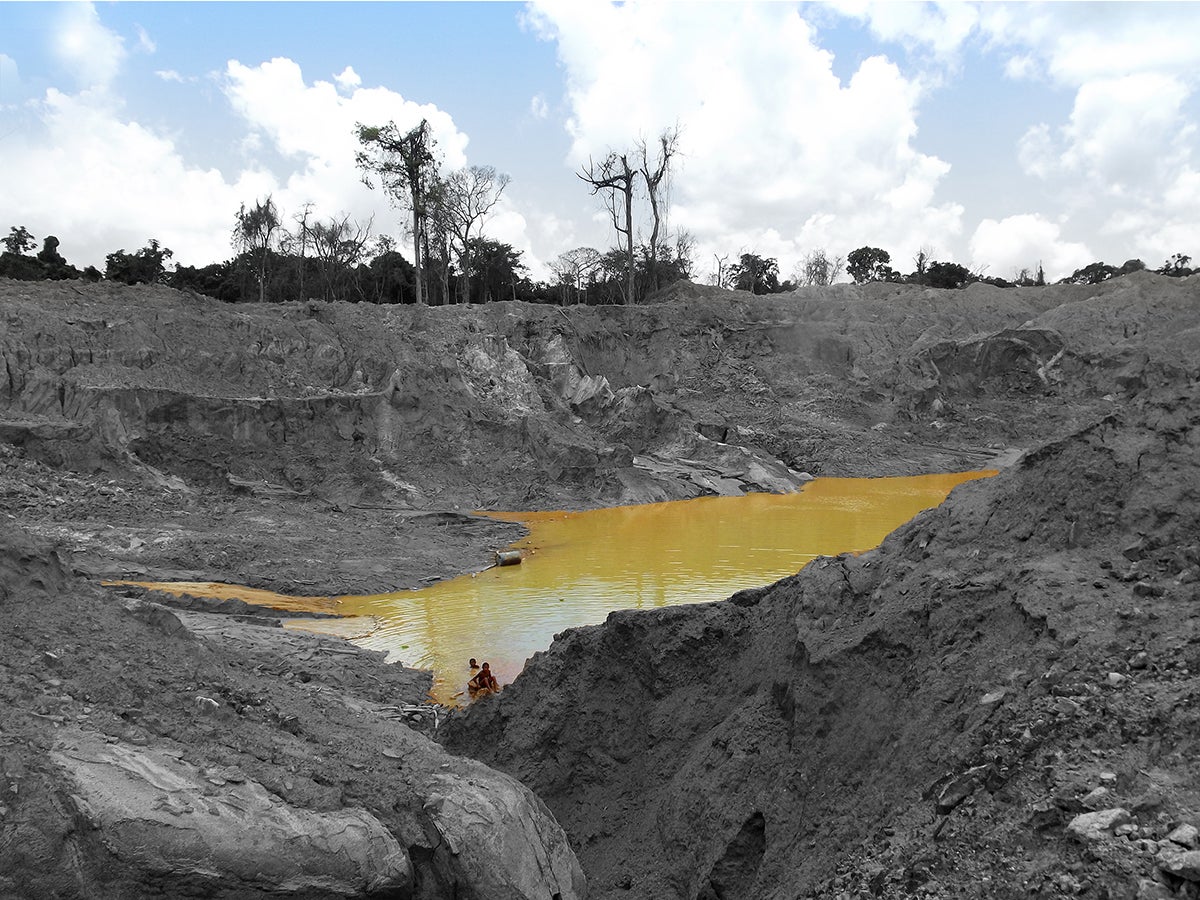Photography by Kevin Bonnett. Designed by Lynn Saghir. Blog co-written by Mark Wenner and Jevon Minto.
Guyana is a mineral-rich state with gold production as its leading economic sector. In 2015, gold accounted for the greatest share of total exports at 42.8 percent of overall exports. The sector directly employs approximately 17–18,000 persons and indirectly benefits 69–70,000 persons. Despite Guyana’s modern regulatory and legal framework for mining, enforcement capacity is weak and is further complicated when the bimodal structure of the sector is taken into consideration. Within the current framework, Guyana needs a clearly defined mining policy that effectively considers both large scale and artisanal, small, and medium-scale (ASM) miners, and improve public sector institutional capacity to properly support the sector.
Broadly speaking, the categories of miners differ in terms of technology deployed, levels of compliance with environmental and safety standards, financial capacity, knowledge, and incentive to make formal production declarations and honor payments of royalties.
 Figure 1: Main Differences between Large Scale and ASM Scale Miners in Guyana – Infographic by Lynn Saghir
Figure 1: Main Differences between Large Scale and ASM Scale Miners in Guyana – Infographic by Lynn Saghir
Notwithstanding the economic benefits and strong linkages found in the smaller mining sector, the large numbers of ASM miners poses serious environmental, social, and health challenges that need to be addressed. In this highly extractive sector, already confronted with fluctuating gold prices, greater efficiency in recovery methods is needed along with better management practices to minimize negative environmental impacts and improve worker safety standards. Consequently, authorities must choose between depending on a well-managed large-scale sector and a restricted ASM sector, promoting sustainable and good practices in all both sectors, or ignoring the social and environmental ills associated with a poorly regulated ASM sector and concentrate solely on improving revenue capture.
If a commitment is to be made to building a sustainable ASM sector the investments in providing access to finance, transferring technical knowledge, promoting the adoption of new technology and improving institutional capacity will be substantial.
Recommended best practices for promoting sustainable mining comprise of methods and practices that would minimize the environmental impact of the activity while simultaneously improving the economic return of mining:
- Harmonize Guyana’s royalty rates with those of neighboring states (Brazil and Suriname) to remove opportunities for arbitrage in smuggling gold to lower royalty and tax jurisdictions.
- Situate mining within an integrated land management model (ILMM) with all the other land use sectors. This would, however, require the development of a national land use policy and information management system. Apart from addressing land conflict, an ILMM would provide the framework for sustainable mineral extraction.
- Cluster and organize the smaller scale operators so they can share the use of expensive technology and incentivize the branding of “green” or “certifiable sustainable gold” to earn price premiums in the marketplace.
- Promote Progressive reclamation and re-vegetation – The Mining Regulations of 2005 require the submission of a Mine Reclamation Plan and Closure Plan. However, it is not compulsory for small-scale miners to reclaim or re-vegetate the mine site after ceasing operations. This is in stark contrast with some countries, where progressive reclamation and re-vegetation are mandatory. In this regard, the Regulations should be amended to make land reclamation compulsory.
- Adopt more efficient and environmentally friendly technologies & use of technology to aid regulation – With the impending ban on the use of mercury, it is imperative that mercury-free technology be promoted since studies conducted by staff of the GGMC revealed that mercury-free technologies, such as the Knelson Concentrator, are financially feasible.
- Restructure and strengthen the government agency(ies) that regulates and promotes mining. In its current form the lead regulatory agency struggles with its mandate, given the number of miners who operate in the sector vis-à-vis the number of mines officers. This problem may be addressed in several ways:
- The monitoring system should be extended to include local actors as active watchdogs.
- Rather than granting miners’ claims that are far apart, they could be concentrated in specific locations.
- Alternatively, claims could be granted to small groups (clusters) rather than individuals.
- Technologies such as drones, Geographic Information Systems (GIS), geo-referencing tracking devices and remote sensing devices could be used to monitor miners and their equipment and random checks carried out where the environmental risks are higher.
- Increasing awareness and providing training to miners on environmentally friendly practices.
- Prospecting mining areas before granting concessions.
- Establishing revolving loan funds, clustering and equipment sharing, and promoting the formation of holding companies or mining cooperatives.
 Photo credit Kevin Bonett – Color composition by Lynn Saghir
Photo credit Kevin Bonett – Color composition by Lynn Saghir


Leave a Reply